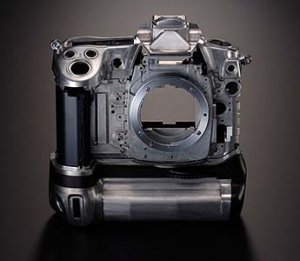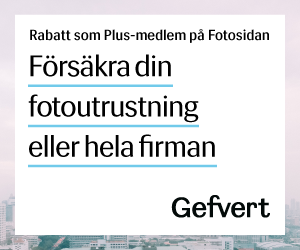Install the app
How to install the app on iOS
Follow along with the video below to see how to install our site as a web app on your home screen.
Notera: This feature may not be available in some browsers.
Du använder en lite för gammal webbläsare, du bör uppdatera den.
Nikon D3
- Trådstartare StaffanW
- Start datum
Jeppe
Aktiv medlem
Euroshots skrev:
Ok..låter ju bra. kika lite på kens sida..och det verkar ju funka med det mesta.
På Kens sida funkar det mesta, så länge det står Nikon på det.. Speciellt om det har 1/500 x-sync
Bokeh
Aktiv medlem
Jeppe skrev:
På Kens sida funkar det mesta, så länge det står Nikon på det.. Speciellt om det har 1/500 x-sync
Har inte den tomten bytt sida ?
/kent
jorgene
Aktiv medlem
Tror de indikerar olika saker (oftast diskuteras ju bara skärpa, skärpa och skärpa av någon anledning). Så här skriver Nikon själva om hur diagrammen på deras sida bör tolkas:Euroshots skrev:
Ingen expert där men jag antar att de röda är 10 linjer per nån enhet som jag inte kommer ihåg vad den heter, kanske mm? Och då är alla optik super, typ
MTF är bara värt något om den mäts på 30-40-50 linjer per mm. lr nåt sånt.. =)
In the MTF chart of this website, the horizontal axis is in millimeters and shows the distance from the center of the image toward the edges, and contrast value (highest value is 1) is shown in the vertical axis, with fixed spatial frequencies of 10 lines/mm and 30 lines/mm.
The MTF chart for each lens is based on the value at the maximum aperture of the lens; the red line shows the spatial frequency of 10 lines/mm and the blue line, 30 lines/mm.
In the off-axis field, contrast reproducibility of the lens for sagittal direction and meridional direction varies with astigmatic affection. The path of 10 lines/mm indicates the contrast reproducibility of the lens (the higher and straighter is better). The higher and straighter the 30 lines/mm-path is, the higher the resolution of the lens.
macrobild
Avslutat medlemskap
Om vi nu är inne på MTF
Läs förklaring från Lars Kjellberg.
www.photodo.com www.qpcard.com.
MTF testade objektiv världens största samling
http://old.photodo.com/nav/prodindex.html
Vilka frekvenser som är viktiga, utskrift , kopior storlek på kopia etc
Mikael
Understanding the MTF graphs, numbers and grades We have been testing lenses with Hasselblads Ealing MTF equipment since 1991. All MTF reports are made with the same equipment and by the same operator (Per Nordlund at Victor Hasselblad AB).
So far we have tested lenses only at infinity.
We measure MTF at 10, 20 and 40 lp/mm, where 10 lp/mm (line pairs/ mm) means 10 black lines with 10 white lines in between, for each millimeter.
The lens with the highest MTF in our tests (so far) is the Canon EF 200/1,8L USM.
Photodo test result: 4,8
Higher is better. 4,8 is the grade on a scale going from 0 to 5. The grade is based on the average weighted MTF for the lens. No other variables, such as distortion, flare, or ghosting are taken into account. We chose 0,88 for a grade of 4,8 to make sure that we will never hit the "roof" (>5). See more at Average Weighted MTF: 0,88 below.
Effective focal length: 195 mm
Often the real focal length differs from the one given by the manufacturer. 195 mm is the length we measured with the Ealing.
Weighted MTF for 200 mm: f1,8 0,82, f2,8 0,89, f4 0,90, f8 0,87
Higher is better. MTF is measured 0, 3, 6, 9, 12, 15, 18, and 21 mm from the image center (on axis), at 10, 20 and 40 lp/mm, in two different directions (sagital and tangential). That is all together 48 measurements at each focal length and each f-stop. Rather than listing all these numbers we calculate a weighted average number for each f-stop of all lenses and each focal length of zoom lenses. The center of the image is more important than the edges, and 10 lp/mm is more important than 20 and 40.
The maximum MTF is 1,0, but due to optical imperfections and diffraction, a perfect score is impossible to reach at these line frequencies.
The MTF at large apertures (f1,0 - f2,8) is limited by optical imperfections (with major differences between lenses). At small apertures (f11 - f32+) MTF is limited by diffraction (with minor differences between lenses). For example the Canon EF 200/1,8L USM has its peak at f4.
We don't measure beyond f8 because lens performance at small apertures is limited more by diffraction than by optical quality. At very small apertures all lenses are about equally bad.
Average Weighted MTF: 0,88
Higher is better. When we report an average MTF number for all f-stops at one focal length we use f4 (or wide open, if f4 is not attainable) and f8. Most lenses have their highest MTF at f8. High-speed lenses almost always have a very low MTF at full aperture. That is why we decided to use f4 and f8 as standard apertures. Since MTF for f8 is slightly more important than for f4, we assign weights of 60% for f8 and 40% for f4. In the case of zoom lenses, we report the weighted average MTF at each measured focal length.
Weighted MTF 10 lp/mm: 0,94
Higher is better. 10 lp/mm is important for evaluating the overall contrast and resolution when making small enlargments (10 x 15 cm or 4 x 6 inches).
Weighted MTF 40 lp/mm: 0,71
Higher is better. 40 lp/mm is important only when you intend to make large prints of high quality. If you are going to use the lens with fine grain film, the camera on a tripod, and make big enlargements, then it is important to choose a lens with a high MTF at 40 lp/mm.
Max distortion: -1,1 %
Closer to zero is better. Distortion is when a straight line near the edge appears curved in the image. If the line curves out in the middle, it is due to negative (barrel) distortion of the lens
Positive or pincushion distortion is when straight lines curve inwards in the middle.
The graphs
The graphs show MTF in percent for the three line frequences of 10 lp/mm, 20 lp/mm and 40 lp/mm, from the center of the image (shown at left) all the way to the corner (shown at right).
The top two lines represent 10 lp/mm, the middle two lines 20 lp/mm and the bottom two lines 40 lp/mm.
The solid lines represent sagital MTF (lp/mm aligned like the spokes in a wheel). The broken lines represent tangential MTF (lp/mm arranged like the rim of a wheel, at right angles to sagital lines).
On the scale at the bottom 0 represents the center of the image (on axis), 3 represents 3 mm from the center, and 21 represents 21 mm from the center, or the very corner of a 35 mm-film image.
Separate graphs show results at f8 and full aperture. For zoom lenses, there are graphs for each measured focal length.
Läs förklaring från Lars Kjellberg.
www.photodo.com www.qpcard.com.
MTF testade objektiv världens största samling
http://old.photodo.com/nav/prodindex.html
Vilka frekvenser som är viktiga, utskrift , kopior storlek på kopia etc
Mikael
Understanding the MTF graphs, numbers and grades We have been testing lenses with Hasselblads Ealing MTF equipment since 1991. All MTF reports are made with the same equipment and by the same operator (Per Nordlund at Victor Hasselblad AB).
So far we have tested lenses only at infinity.
We measure MTF at 10, 20 and 40 lp/mm, where 10 lp/mm (line pairs/ mm) means 10 black lines with 10 white lines in between, for each millimeter.
The lens with the highest MTF in our tests (so far) is the Canon EF 200/1,8L USM.
Photodo test result: 4,8
Higher is better. 4,8 is the grade on a scale going from 0 to 5. The grade is based on the average weighted MTF for the lens. No other variables, such as distortion, flare, or ghosting are taken into account. We chose 0,88 for a grade of 4,8 to make sure that we will never hit the "roof" (>5). See more at Average Weighted MTF: 0,88 below.
Effective focal length: 195 mm
Often the real focal length differs from the one given by the manufacturer. 195 mm is the length we measured with the Ealing.
Weighted MTF for 200 mm: f1,8 0,82, f2,8 0,89, f4 0,90, f8 0,87
Higher is better. MTF is measured 0, 3, 6, 9, 12, 15, 18, and 21 mm from the image center (on axis), at 10, 20 and 40 lp/mm, in two different directions (sagital and tangential). That is all together 48 measurements at each focal length and each f-stop. Rather than listing all these numbers we calculate a weighted average number for each f-stop of all lenses and each focal length of zoom lenses. The center of the image is more important than the edges, and 10 lp/mm is more important than 20 and 40.
The maximum MTF is 1,0, but due to optical imperfections and diffraction, a perfect score is impossible to reach at these line frequencies.
The MTF at large apertures (f1,0 - f2,8) is limited by optical imperfections (with major differences between lenses). At small apertures (f11 - f32+) MTF is limited by diffraction (with minor differences between lenses). For example the Canon EF 200/1,8L USM has its peak at f4.
We don't measure beyond f8 because lens performance at small apertures is limited more by diffraction than by optical quality. At very small apertures all lenses are about equally bad.
Average Weighted MTF: 0,88
Higher is better. When we report an average MTF number for all f-stops at one focal length we use f4 (or wide open, if f4 is not attainable) and f8. Most lenses have their highest MTF at f8. High-speed lenses almost always have a very low MTF at full aperture. That is why we decided to use f4 and f8 as standard apertures. Since MTF for f8 is slightly more important than for f4, we assign weights of 60% for f8 and 40% for f4. In the case of zoom lenses, we report the weighted average MTF at each measured focal length.
Weighted MTF 10 lp/mm: 0,94
Higher is better. 10 lp/mm is important for evaluating the overall contrast and resolution when making small enlargments (10 x 15 cm or 4 x 6 inches).
Weighted MTF 40 lp/mm: 0,71
Higher is better. 40 lp/mm is important only when you intend to make large prints of high quality. If you are going to use the lens with fine grain film, the camera on a tripod, and make big enlargements, then it is important to choose a lens with a high MTF at 40 lp/mm.
Max distortion: -1,1 %
Closer to zero is better. Distortion is when a straight line near the edge appears curved in the image. If the line curves out in the middle, it is due to negative (barrel) distortion of the lens
Positive or pincushion distortion is when straight lines curve inwards in the middle.
The graphs
The graphs show MTF in percent for the three line frequences of 10 lp/mm, 20 lp/mm and 40 lp/mm, from the center of the image (shown at left) all the way to the corner (shown at right).
The top two lines represent 10 lp/mm, the middle two lines 20 lp/mm and the bottom two lines 40 lp/mm.
The solid lines represent sagital MTF (lp/mm aligned like the spokes in a wheel). The broken lines represent tangential MTF (lp/mm arranged like the rim of a wheel, at right angles to sagital lines).
On the scale at the bottom 0 represents the center of the image (on axis), 3 represents 3 mm from the center, and 21 represents 21 mm from the center, or the very corner of a 35 mm-film image.
Separate graphs show results at f8 and full aperture. For zoom lenses, there are graphs for each measured focal length.
Senast ändrad:
thansen
Aktiv medlem
Thom Hogan funderar kring följande frågeställningar på sin sida
What happened to LBCAST?
Where's the D3x?
What got replaced?
Why no sensor cleaning in the D3?
Why no sensor stabilization?
Where's the landscape camera?
What happened to the ambient light sensor?
Why no ISO 100?
Can I create uncompressed NEFs?
Is there anything Nikon didn't mention?
Does the D300 really drop to 2.5 fps when using 14-bit NEFs?
The D200 battery sucks, so why didn't they switch?
Is the D300 sensor the Sony IMX021?
What's with the MB-D10 grip?
What happened to LBCAST?
Where's the D3x?
What got replaced?
Why no sensor cleaning in the D3?
Why no sensor stabilization?
Where's the landscape camera?
What happened to the ambient light sensor?
Why no ISO 100?
Can I create uncompressed NEFs?
Is there anything Nikon didn't mention?
Does the D300 really drop to 2.5 fps when using 14-bit NEFs?
The D200 battery sucks, so why didn't they switch?
Is the D300 sensor the Sony IMX021?
What's with the MB-D10 grip?
Makten
Aktiv medlem
Har han lingonvecka eller?thansen skrev:
Thom Hogan funderar kring följande frågeställningar på sin sida
What happened to LBCAST?
Where's the D3x?
What got replaced?
Why no sensor cleaning in the D3?
Why no sensor stabilization?
Where's the landscape camera?
What happened to the ambient light sensor?
Why no ISO 100?
Can I create uncompressed NEFs?
Is there anything Nikon didn't mention?
Does the D300 really drop to 2.5 fps when using 14-bit NEFs?
The D200 battery sucks, so why didn't they switch?
Is the D300 sensor the Sony IMX021?
What's with the MB-D10 grip?
macrobild
Avslutat medlemskap
Enda problemet som jag kan se är att Nikon blajar till det med Nef och andra programskrivare har svårigheter att tolka deras data helt och hållet. Vilket jag frågade Nikon Lasse på Kamera&Bilds chat för någon dag sedan.
Nikon vill så gärna vara bästa rawprogramsskrivare-också.
Mikael
Nikon vill så gärna vara bästa rawprogramsskrivare-också.
Mikael
Makten
Aktiv medlem
Varför skulle de då behöva tvinga folk att använda deras programvara? Det verkar mer begåvat att sänka priset på NX eller dess uppföljare. Jag tycker att ett sådant program bör ingå i kameran. Lägg på en tusenlapp på kamerapriset hellre.macrobild skrev:
Nikon vill så gärna vara bästa rawprogramsskrivare-också.
Jeppe
Aktiv medlem
Bokeh skrev:
Har inte den tomten bytt sida ?
/kent
Nej, han har bara adderat Canon, eftersom han märkte att det genererade ännu mer inkomster
Teodorian
Aktiv medlem
Apropå de nya objektiven till D3 kan vi ju begrunda Thom Hogans kommentar om MTF-test och andra test av objektiv som vi läser på nätet: "The lens tests that are floating around the Web these days tend to be done in a way that measures what the combination of equipment can do, not what the lens can do."
Jeppe
Aktiv medlem
Det är ju en intressant fundering, men jag har bestämt för mig att ett riktigt MTF-test inte inbegriper en kamera, utan är en benchmark av vad just det exemplaret är kapabelt till. Mao. så vet man aldrig om tillverkaren har letat upp ett bra exemplar. Men jag vet i varje fall att Canons kurvor är simulerade, och alltså bör ses som riktlinjer. Skulle inte förvåna mig om Nikon gör detsamma.
PMD
Aktiv medlem
Vad var det för något?Jeppe skrev:
Det dröjde inte länge....
http://cgi.ebay.de/Nikon-D3_W0QQite...ryZ43456QQssPageNameZWDVWQQrdZ1QQcmdZViewItem
Nåväl..den siste id**ten är som sagt inte född än.
PMD
Aktiv medlem
Är inte det en myt?Teodorian skrev:
Särskilt objektiv tycks ju skilja mycket i kvalitet från exemplar till exemplar av någon anledning.
PMD
Aktiv medlem
Just det där exemplet är nog en dålig idé. Man kan ju lika gärna beskära i efterhand, och då kan man dessutom välja det utsnitt som man vill ha.Teodorian skrev:
Ett och samma objektiv tex 70-200 kan få just det utsnittet men också ända upp till det dubbla dvs motsvarande 140-400 om någon skulle önska det. Om det är en bra eller dålig idé vet jag inte.
Jerker Dahlblom
Aktiv medlem
www.verkkokauppa.com har satt D300:an till 1999.90 € och D3:an till 5199.90 €. Igår var de betydligt högre satta men jag minns inte exakta priserna.
jimslim84
Aktiv medlem
Re: Re: Yummy
Givetvis är det inte rätt slutarsteg. Min poäng var att vid samma ljus och bländare så får du en 133 ggr så snabb tid vid iso 25600 som vid iso 200. Är inte det yummy?
Mvh,
Jeppe skrev:
Vad är det för yummy med det?
Rätt är (inställbart)
60
125
250
500
1000
2000
4000
8000
Givetvis är det inte rätt slutarsteg. Min poäng var att vid samma ljus och bländare så får du en 133 ggr så snabb tid vid iso 25600 som vid iso 200. Är inte det yummy?
Mvh,
Senast ändrad:
Jeppe
Aktiv medlem
PMD skrev:
Vad var det för något?
Det var en D3:a till salu... err.. förlåt, tegelsten menar jag.
Similar threads
- Svar
- 30
- Visningar
- 5 K
- Svar
- 22
- Visningar
- 3 K
- Svar
- 62
- Visningar
- 7 K








